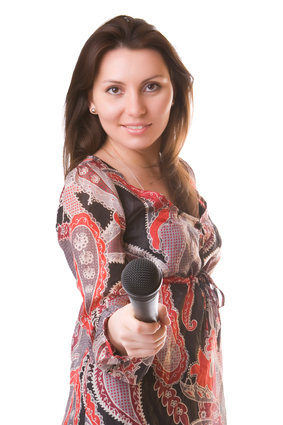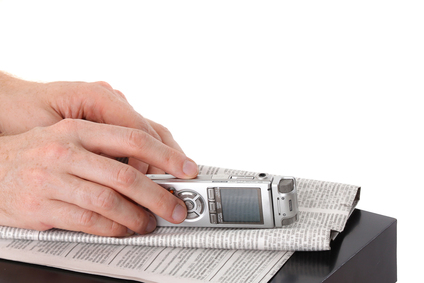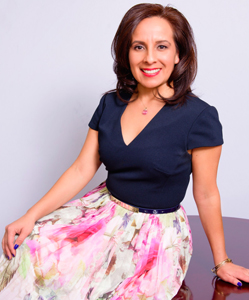Magazine Interviewing
 Interviewing a person or celebrity for an article can be a daunting task but it doesn’t have to be. Just remember that the people being interviewed are just like you. They also don’t like to be made to feel uncomfortable so make the interview as pleasant as possible. Treat them just like any other person and you will find that your interview will go smooth and more relaxing.
Interviewing a person or celebrity for an article can be a daunting task but it doesn’t have to be. Just remember that the people being interviewed are just like you. They also don’t like to be made to feel uncomfortable so make the interview as pleasant as possible. Treat them just like any other person and you will find that your interview will go smooth and more relaxing.
If you are interviewing an author, sometimes their publisher will help set up an interview with this individual. Do not leave that option out. Publishers also want more good public relations (PR) for their clients. Sometimes these publishers you may even give you complimentary books for your background research on these people. If you do go this route, don’t forget to get a copy of the published article to the publisher that assisted you with the interview. This shows you as a professional and it also builds up your credibility and reputation as a credible writer for future projects.
Once you set your sights on a particular person to interview, do your footwork and do some research about this individual. This will benefit both you and the person being interviewed. You won’t feel as nervous and that person will be flattered that you took the time to find out information about them. It’s critical that you prepare and make sure you consider any comments from your editor on this piece. Make sure you stay within the parameters and the tone wanted for a magazine.
When setting up a time for the interview, ask them where they would like to meet or if they have preferences. You want them to be in a setting where they will feel comfortable. Set up the time and location and make any accommodations or necessary arrangements as to what is needed for the interview. Make sure that you have all the appropriate equipment ready for the interview; recorder, camera for pictures, writing material, etc. It’s important to ensure that they are all working so there are no glitches.
Interviews can be done face-to-face, through the internet or phone, through email or Skype or whatever other medium you may decide to use. The best interviews are probably the ones that are done face-to-face because you tend to see all the body language and this helps to interpret where that individual is coming from.
Equipment
Unless you work for a major TV network or have access to camera equipment, most interviews will be done using just a recorder and a pen and notepad; although, the possibilities of using laptops for jotting down notes can be used. I would caution against this as this takes away from the intimacy of the interview and the clicking of your fingers on the keyboard may be distracting. It’s probably best to stay away from this. You can take a camera and request a photo after the interview but don’t push this as some people may not like to be photographed.
It’s best to use a recorder so that you can review the information after the interview. This ensures that you capture everything said in the interview. It’s important to make sure the information is accurate before publishing any responses to an article or news media. This will differentiate you as a professional and will insure that there are no misquotes.
Questions for a Magazine Interview
Decide on what it is that you want to take away from the interview. Decide on a set of topics that you would like to cover and then draft up questions that would be used for the interview. Make the questions opened ended but be prepared for yes and no answers so always have a backup plan. Ask interesting questions and include things that you believe your target audience would find informative. It’s best to prepare your questions ahead of time and then let them sit for a day or two before reviewing again. Rank them in the order of importance in case you run out of time. Make sure that your questions are concise and methodical and that they cover the adequate information needed for your article.
Before you begin the interview, get the individual in the right mood by starting with some small talk. Small talk usually makes puts people at ease and helps to calm the nerves. Try not to keep digging for answers to questions that they may not want to answer.
A common mistake amongst interviewers is that they tend to interrupt the person they are interviewing. Once you ask the question wait for the answer. Give them time to answer and try not to chime in. There may be awkward moments and that is okay.
Allow a minimum of 20 minutes for any interview unless the interviewee just can’t give you this amount of time. Once the interview is over – thank them for their time.
After the Magazine Interview
Review your notes and recorder shortly after the interview. It’s best to review the material while the interview responses are still clear in your thoughts. It is also advisable to make sure that the equipment worked during the interview.
Make sure you check any facts from the interview. Sometimes the interviewees don’t provide factual material and it’s up to you to ensure that the facts are accurate.
Send a thank you note right away to your subject person.
Before you begin writing the article, organize your thoughts and the information received during the interview so that you end up with a great editorial piece. Remember to state your main ideas clearly.
Once you get published make sure to provide the appropriate parties a copy of the interview or article. It is not necessary to let them see the interview ahead of time; however, there are occasions when they would want to see it before publication.
Conducting an interview is a give-and-take process but be prepared for any curve balls that may be thrown your direction. Make it sound interesting and be professional.





